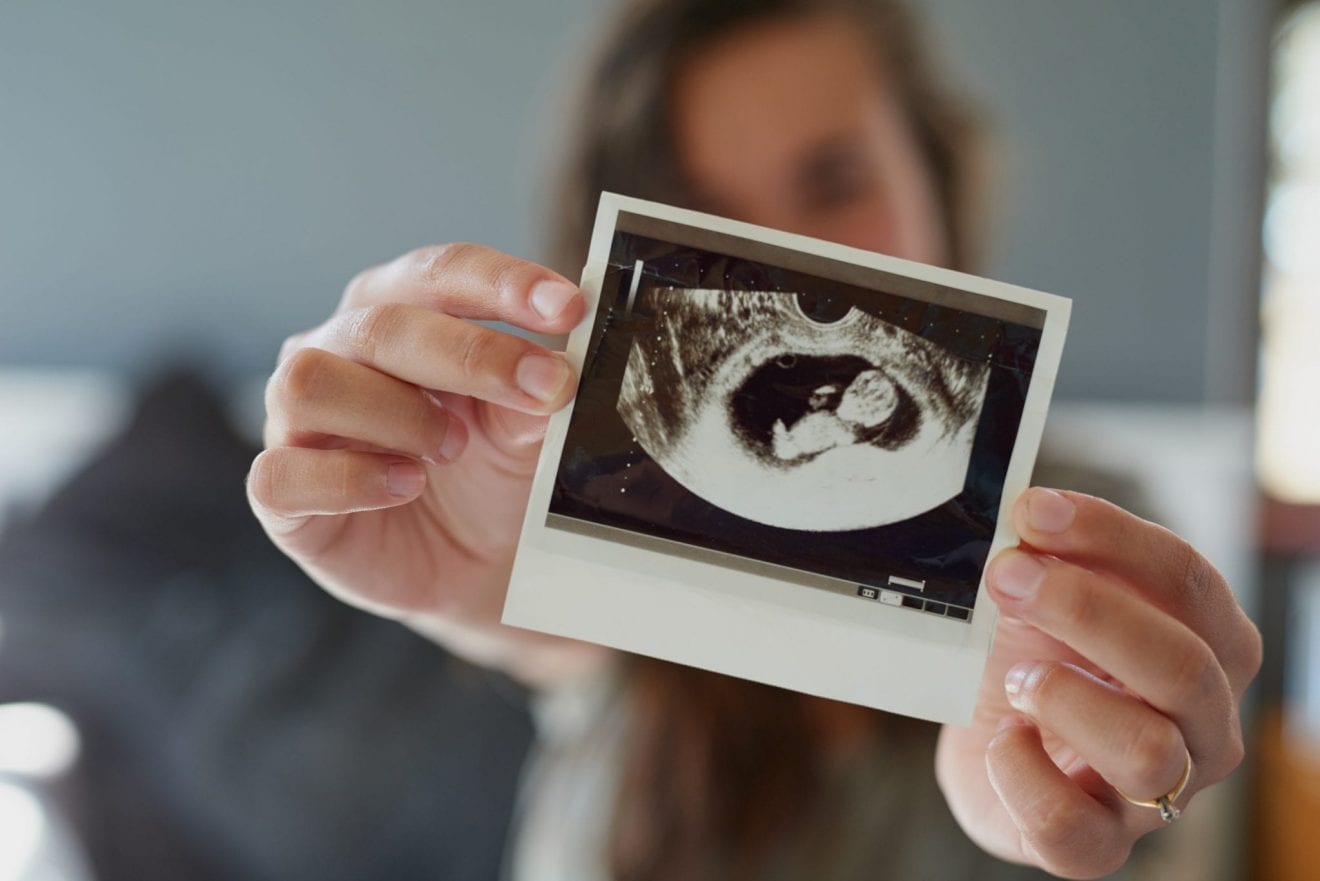Prenatal genetic testing is one of the first big pregnancy decisions you will make. With most tests being offered at the end of the first trimester or the beginning of the second trimester, your doctor will most likely inform you about your options early in the process. My doctor gave me a sheet with all my options, asking me to choose which one (if any) I wanted at my first in-depth prenatal appointment. So, preparing yourself as to your options is very important.
Types of Prenatal Genetic Testing
While these types have different options, the two main ways to understand your baby’s genetics are through screening and diagnostic tests.
- Screening tests are no-risk screens that often involve taking blood or ultrasounds that can determine your risk for genetic disorders.1
- Diagnostic tests tell you whether your child has a genetic disorder. These tests are much more invasive and do carry certain risks with them.2
Screening Tests
Prenatal screenings are often the first and most common type of genetic testing for pregnant women. Even if you are low risk, have no history of genetic disorders, and have been tested yourself, your doctor will still likely recommend these screenings as part of your prenatal care.3 The tests use a blood sample or an ultrasound to determine your risk. It’s important to note that these tests cannot determine whether your baby has any disorders, but if the results come back with a high risk, you can do more intensive diagnostic testing.
You can also have a sequential integrated screening or carrier screening done before conception or during your pregnancy.7,8
Noninvasive Prenatal Test (NIPT)
As your baby forms, its DNA will enter your bloodstream. The NIPT test locates this DNA through a blood sample and looks for abnormalities.9 The NIPT can be done as early as nine weeks and tests for three main genetic disorders, including Trisomy 21 (Down syndrome), Trisomy 18 (Edwards syndrome), and Trisomy 13 (Patu syndrome).10,11,12 In addition to testing for genetic disorders, this test can also tell your baby’s gender. Your doctor will likely suggest a diagnostic test if the results are positive for any disorders. You will probably also receive an additional screening, such as an NT test, to confirm the risk.
Nuchal Translucency Screening Test (NT)
This screening test is also done between weeks 11 and 13 of the pregnancy.4 Instead of your blood, it looks at the baby, specifically its neck. If the fetus has a higher-than-normal amount of fluid at the base of its neck, this is often a sign of a chromosomal problem. This test measures your baby’s length and neck thickness via ultrasound. A technician will take these measurements, along with your age and the baby’s gestational age, to determine the risk. This test and the results from a NIPT can help you understand whether you need further testing.
Level 2 or Anatomy Ultrasound
This screening test is usually done between 18 and 22 weeks. It is often less daunting than the previous tests as you likely already know your risk of genetic disorders and abnormalities. This test uses an ultrasound to make sure your pregnancy is developing normally. This test is often a parent’s first glimpse at what their baby will look like.
Diagnostic Tests
After receiving the results of the above screening tests, some women may never have to think about the diagnostic tests. But, for many women, a positive result on screening can lead to more testing to determine if the abnormality is there. Women who have a family history or know they are a carrier of a genetic disorder will often skip straight to these tests instead of first undergoing screening tests. Instead of looking at the mother’s blood or measuring the baby via ultrasound, diagnostic tests go straight to the baby, using their genetic material to understand whether or not an abnormality exists.
Chorionic Villus Sampling (CVS)
Chorionic Villus Sampling is a test done during your first trimester, specifically between weeks 10 and 13.5 It takes a tissue sample from the placenta to analyze the baby’s genetics and determine whether or not the DNA shows any chromosomal abnormalities. During the procedure, a Chorionic Villus Sampling specialist or your doctor will use an ultrasound machine to determine where to collect cells. The doctor inserts a thin needle in the abdomen, or they may take the sample from the vagina or cervix via a tube. While the entire procedure usually takes about 30 minutes, most women say they experience some discomfort. The test is 98% to 99% accurate, and the risks are low, but bleeding and cramping may occur.
Amniocentesis
This test is done later in the pregnancy, usually between weeks 15 and 20. The Amniocentesis test is similar to the Chorionic Villus Sampling since your doctor will use an ultrasound to locate the amniotic sac.6 They will insert a thin needle into the abdomen and uterus to collect fluid. An amniocentesis checks for hundreds of genetic disorders and is 98% to 99% accurate. However, it can not determine all genetic problems and won’t tell you how severe a problem is. Side effects are minor, but your doctor will likely advise you to rest for a few hours and avoid sex, heavy lifting, and extreme exercise for a few days. While the risks are extremely low, there is an estimated one in 300-500 chance of the procedure ending in a miscarriage.13
Prenatal genetic testing can be a nerve-wracking part of every pregnancy. Knowing your options and risks is a great way to ease some nerves during pregnancy. Talk to your doctor about your options and their specific recommendations. However, know that the choice is yours as to what tests you choose to have done.





















